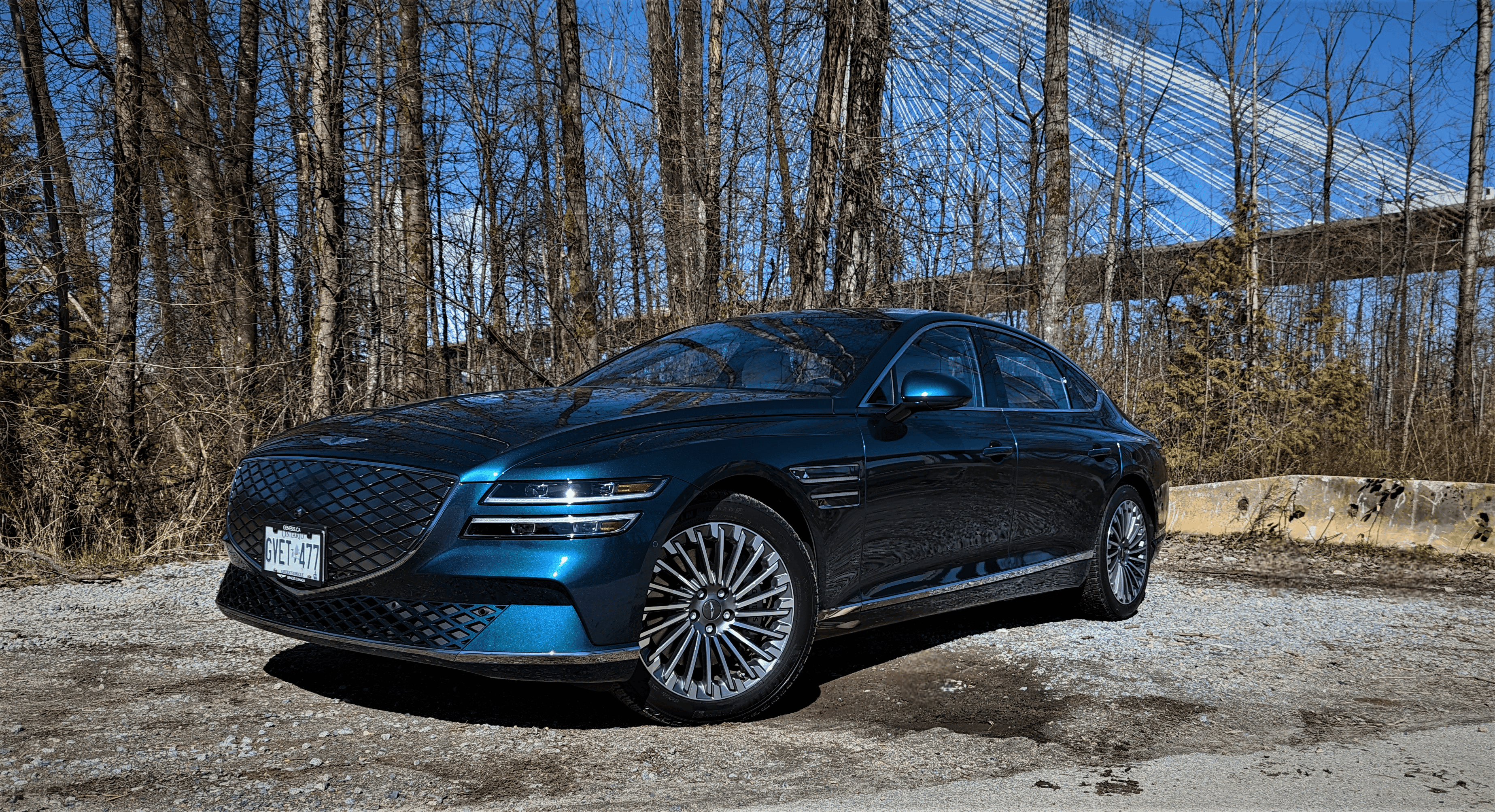The Genesis G80 is one of my favorite mid-size luxury sedans because I think it’s beautiful (yes, I know, this is subjective). The Genesis G80 has been on sale in North America since late 2016 as a 2017 model. The “first generation” G80 was a rebadged and slightly reworked Hyundai Genesis sedan. The second-generation Genesis G80 (codenamed RG3) was the first fully developed Genesis sedan and went on sale in 2020.
Initially, the Genesis G80 was offered with a 2.5-liter turbocharged 4-cylinder engine and a 3.5-liter turbocharged V6 engine; I’ve reviewed both versions of the G80 and was very impressed with them. Genesis also released a G80 Sport in 2021, which is not as sporty as the name would suggest.
Genesis introduced yet another trim of the G80 in 2021 in South Korea and in 2022 in North America. The new trim is a fully electric sedan called the G80 Electrified. Genesis plans to become an EV-only carmaker by 2025, meaning all new cars starting in 2025 will be electric. Consumers will still be able to buy gasoline-powered cars, but Genesis will only develop new EVs, and by 2030 sales of gasoline-powered cars will stop completely.
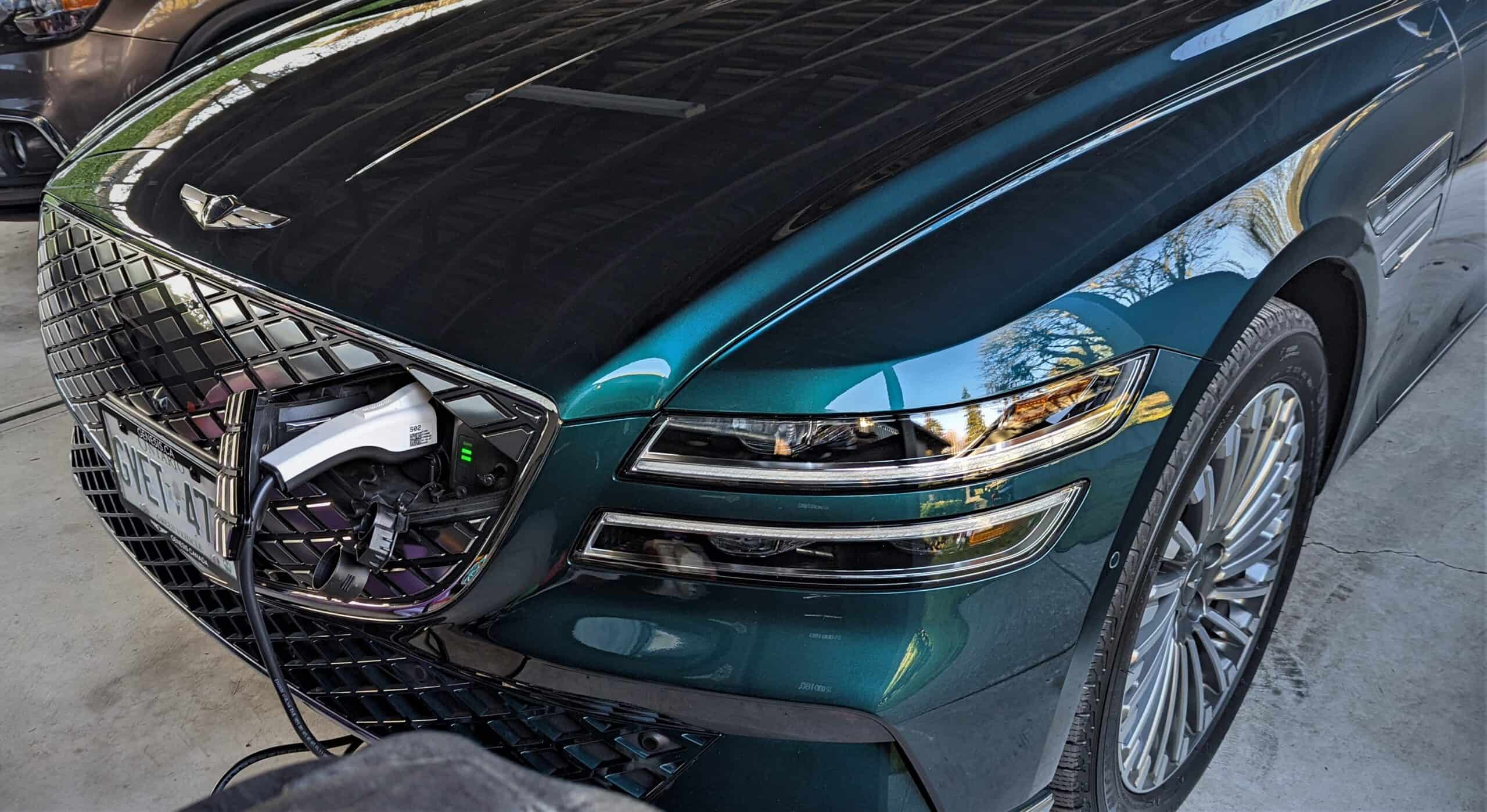
The Genesis G80 Electrified (I think G80e would’ve had a nice ring to it) isn’t a purpose-built EV like other vehicles from the Hyundai/Kia/Genesis trio. Using the gasoline version of a vehicle as an EV has its positives and negatives, depending on your point of view. It’s a good thing because it looks like a “normal” car; looking at the G80, you’d be hard-pressed to notice it’s an EV, even with the hood open. If the big plastic cover didn’t have the EV lettering, a non-car person would think the hood houses an engine (see picture below). The designers at Genesis did such a good job at hiding the EV-ness of the G80 Electrified that even the front grill, which is usually the big giveaway of an EV, looks quite similar to the non-EV G80. You need to look closely to see the front grill is not a grill; it’s a closed solid piece of metal or plastic with diamond patterns to give it the look of a grill; Genesis calls it an “inverted G-matrix grill.” The charge port is hidden quite well in this inverted G-matrix grill. The rear is also missing the exhaust tips, but many carmakers are hiding exhaust tips on their gasoline-powered cars nowadays. You won’t see any lettering on the body of the G80 Electrified that tells you this is an EV.
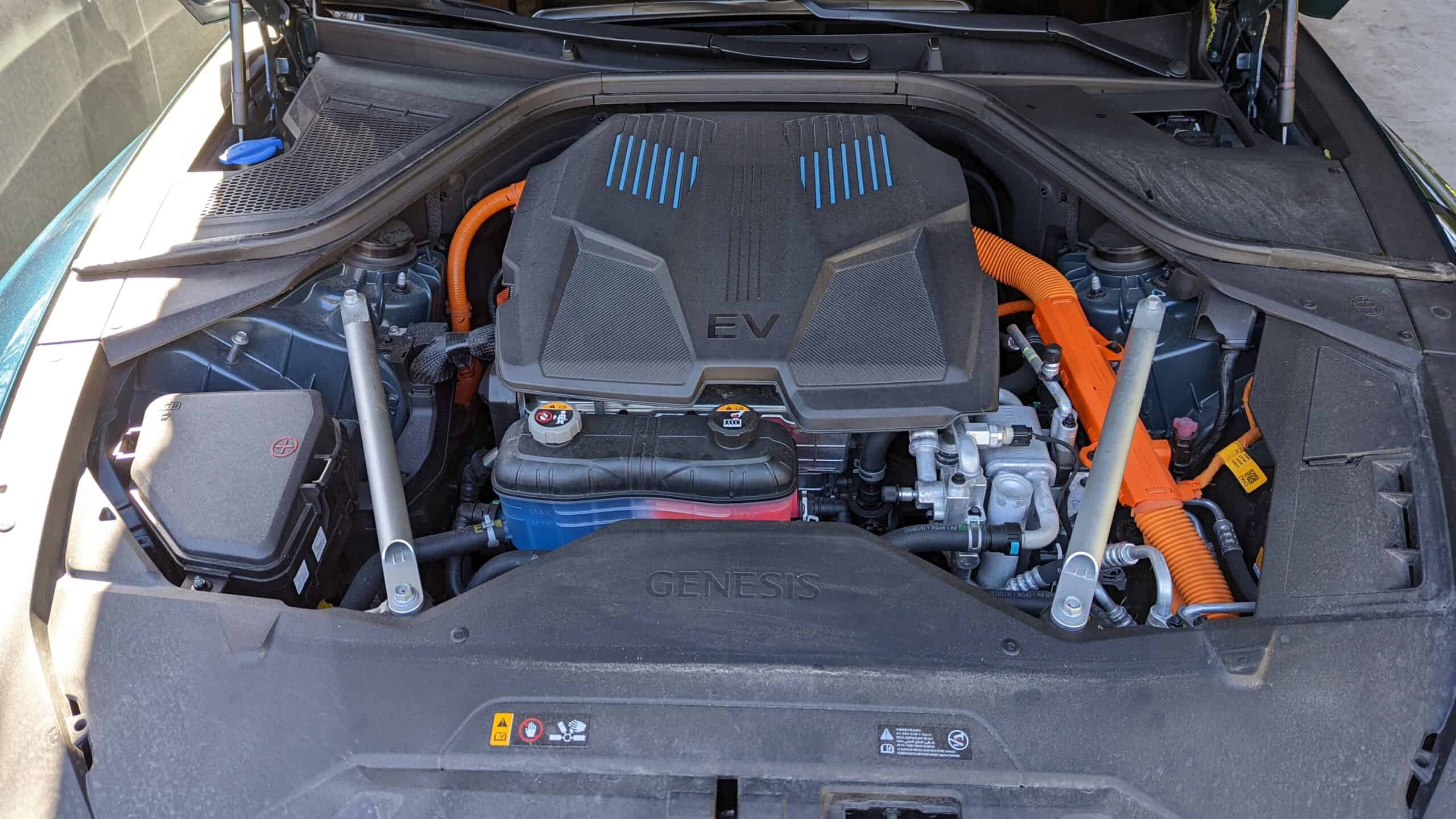
On the other hand, the drawbacks of not using a bespoke EV chassis/design are ergonomics and efficiency. After all, you are stuffing a bunch of heavy batteries into a chassis that wasn’t designed to be an EV. This reduces the overall interior space and the efficiency of the vehicle. We’ve heard a lot of noise about ground-up developed EVs with amazing coefficient of drag numbers. So does the G80 Electrified suffer from these drawbacks of not using a bespoke EV platform? The answer is a yes and a no.
The G80 Electrified uses quite a large battery pack, which had to be stuffed under the floor. The first thing I noticed as soon as I entered the cabin was the high seating position. I tried to lower the seats, but they were at the lowest setting, meaning I was sitting about 1 to 1.5” higher than I would normally sit in the G80 or any other sedan. The headroom seemed fine; I was just looking out of the windshield in a much higher place than I normally would. Having a higher seating position would be a negative for taller people. The rear seats also sit higher, reducing headroom for rear passengers. Because of the higher seating position, the G80 EV isn’t offered with a glass roof. I also thought the trunk was slightly smaller than the gasoline version of the G80.
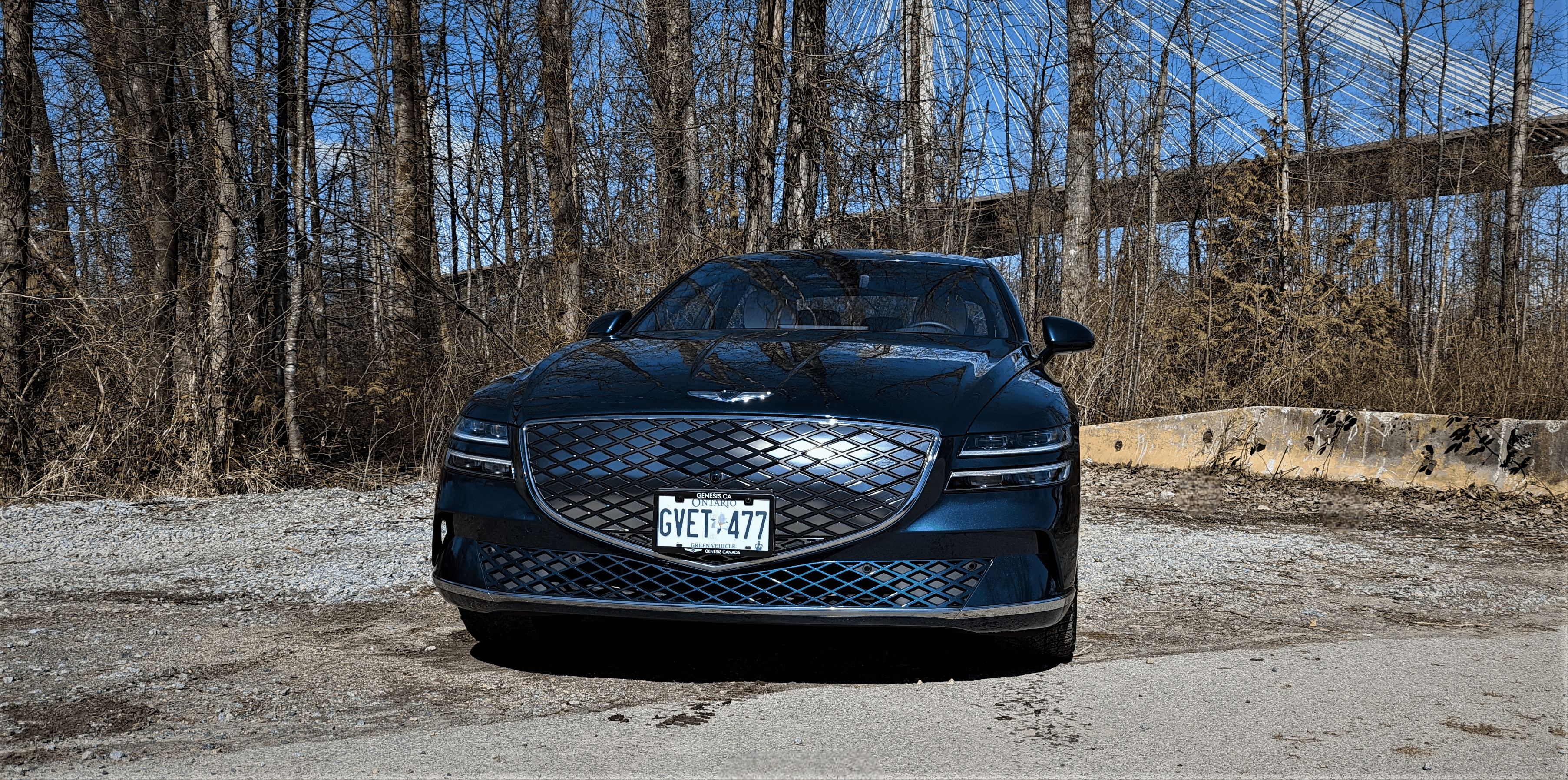
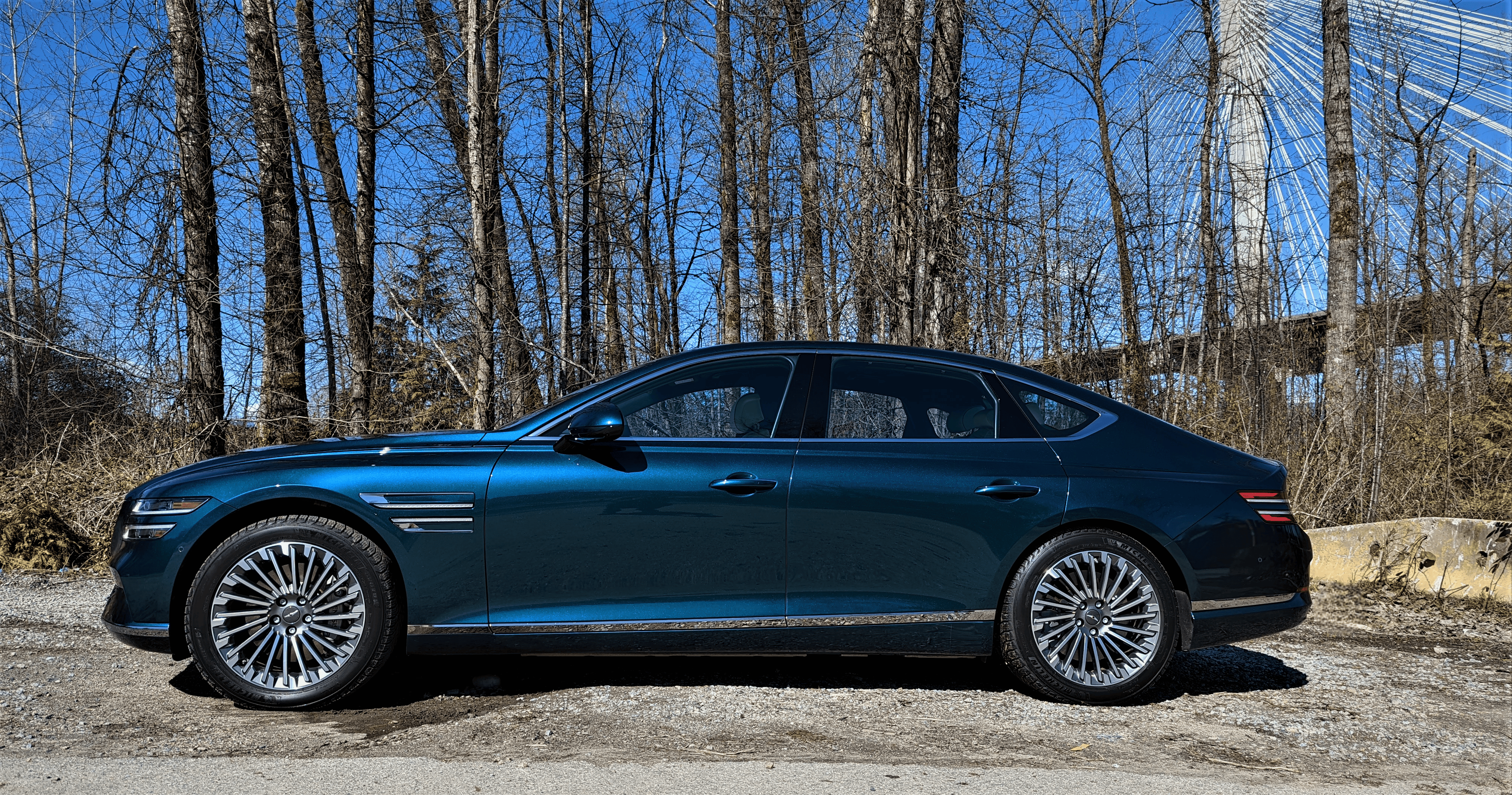

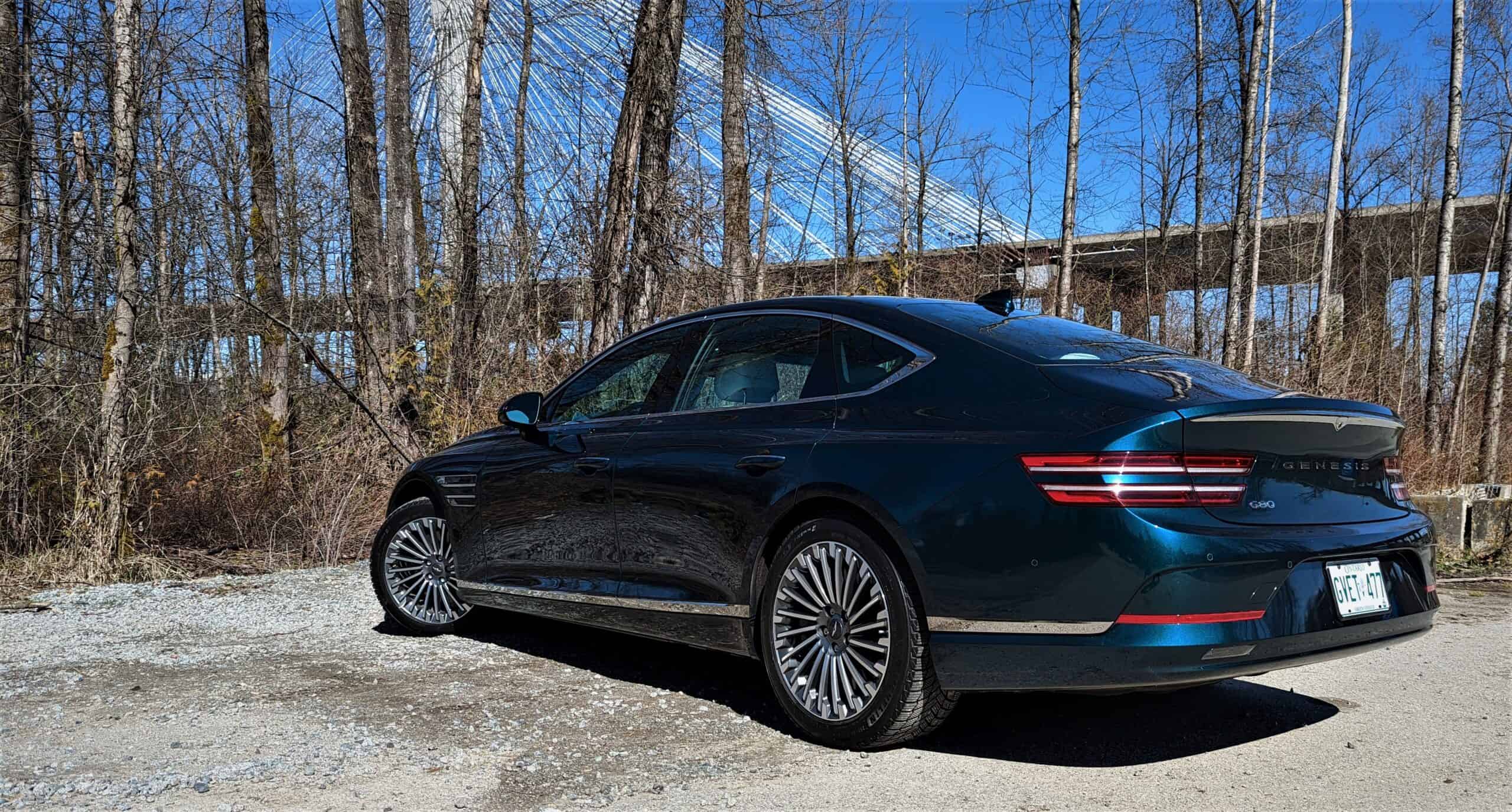
The other drawback I mentioned above is the efficiency of turning a gasoline car into an EV. The Genesis G80 Electrified is rated at 21.7 kWh/100 kilometers in combined driving, which is not bad. Comparing it to the Mercedes-Benz EQS 580 (the G80 EV doesn’t compete directly with that vehicle, but we’ll use this as a comparison), which is rated a 23.14/21.36 kWh/100 km in city/highway driving, it’s very close. And the EQS is shaped like an aerodynamic turd, and it has the lowest drag coefficient of any production vehicle, at 0.20. And it looks absolutely hideous.
The week I had the G80 EV, we had great spring weather, with temperatures ranging from 10 – 18 degrees Celsius (50 – 64 F); I drove just under 300 kilometers in the week, with about 50/50 city/highway driving. The onboard computer showed average consumption of 15.8 kWh/100 km, yes, you read that right. I blew past the claimed numbers by a huge margin. Motor Trend magazine recently did a comparison test of the G80 EV and the EQS, and they found the G80 EV to be more efficient than a purpose-built EV.
I was quite impressed by what Genesis engineers achieved with the G80 EV in terms of efficiency. They definitely understated the efficiency of the G80 Electrified. The G80 proves you don’t need to make your EV look ugly to achieve efficiency; the car can still look good and be efficient. The G80 already has quite an aerodynamically efficient design that also looks good.
The G80 EV is no slouch either to achieve such efficiency. It’s equipped with two electric motors, one at the front and one at the back, producing 275 kW (365 horsepower) and 516 pound-feet of torque, all from 0 rpm. Power is sent to all-four wheels via a 1-speed automatic transmission.
The G80 EV is equipped with an 87.2 kWh lithium-ion battery pack, which is good for 454 kilometers of range. 454 km of range is more than enough for most people’s daily drives, and if you take your G80 EV on a long road trip, the charging times are not bad either. Using a 523-volt system (a bit short of the 800-volt system used on the ground-up E-GMP platform). Using a level 3 350 kW rapid charger, the G80 EV’s batteries can be charged from 10 to 80% in 21 minutes and 45 seconds. Using a 50-kW charger, the same charge takes 67 minutes and 20 seconds. Fully charging the batteries using a Level 2 charger takes 7 hours and 22 minutes. These numbers are based on ideal conditions, which include battery temperature, ambient temperature, and the charger working properly.
I don’t have access to a 240-volt level 2 charger at home; I used a 120-volt standard household outlet, which let me charge the batters at 1.2 kW, meaning a full charge from 0 – 100% would take 72 hours. But no one drains their batteries to 0%, and most people owning these types of cars have level 2 chargers installed. Even with the 120-volt plug, I never felt like I needed to use a public charger for my daily usage (about 60 -70 km).
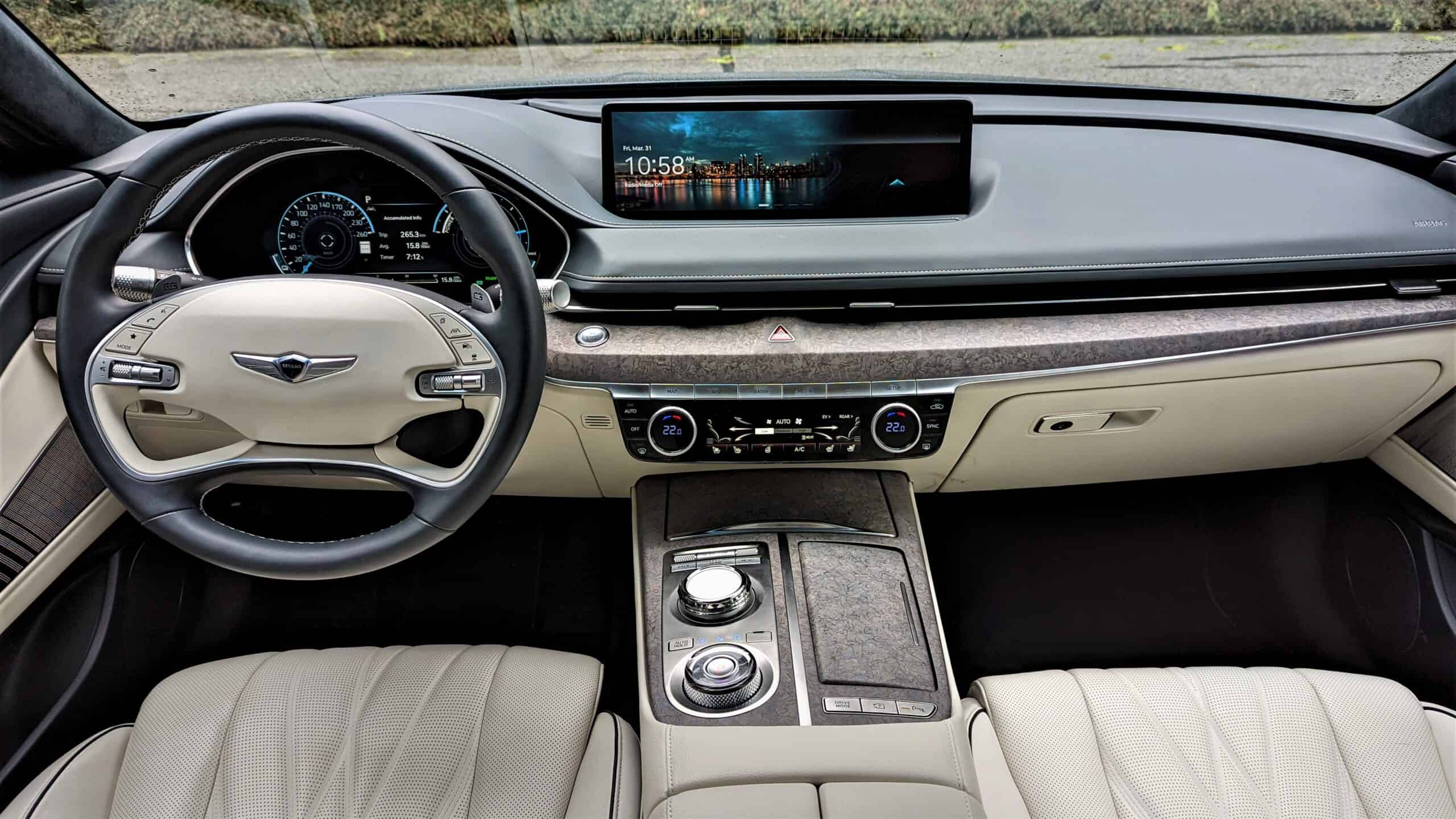
Just like the exterior, the interior is identical to the gasoline version of the G80. Other than the aforementioned higher seating position, I didn’t see any differences. I’ve been a fan of the interior of the G80s, and I still love it. The interior is now slightly quieter than the already quiet G80, thanks to the heavy use of sound-deadening materials and active noise cancelation. Almost no tire noise made it into the cabin, but I did notice slight wind noise at speeds of 100 km/h and above at the top of the windshield, but that’s because I was actively seeking to hear any sort of noise.
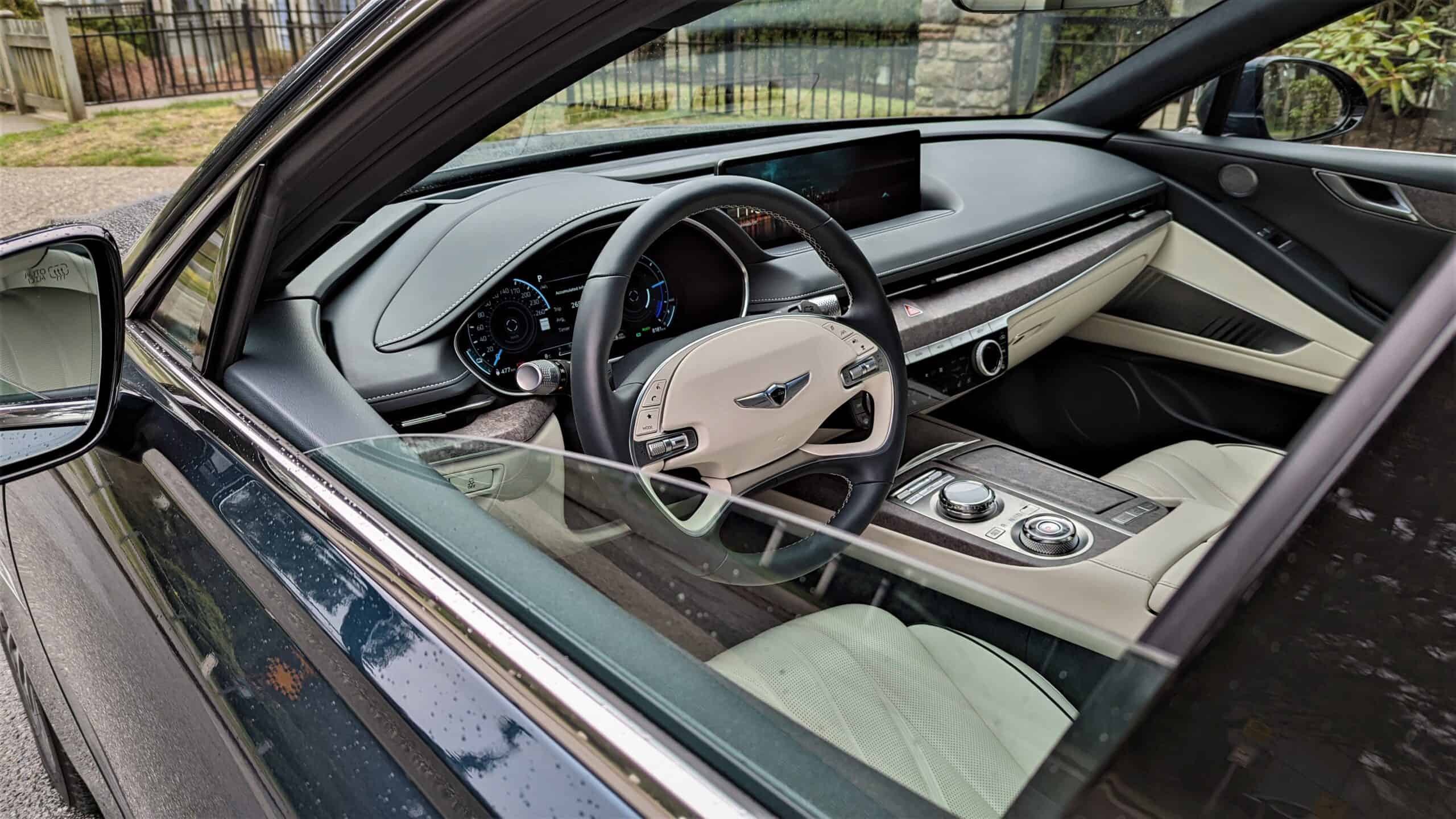
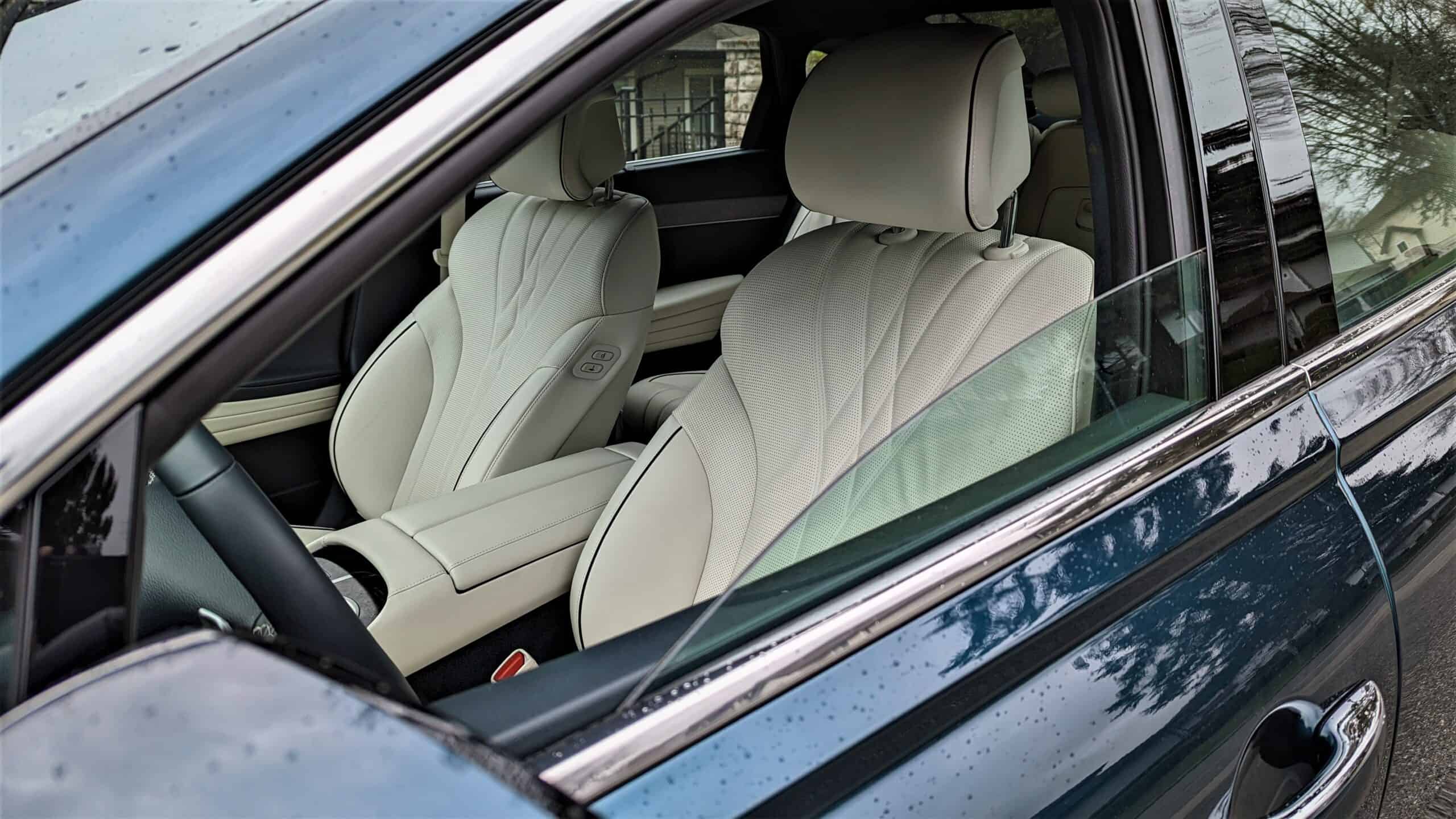
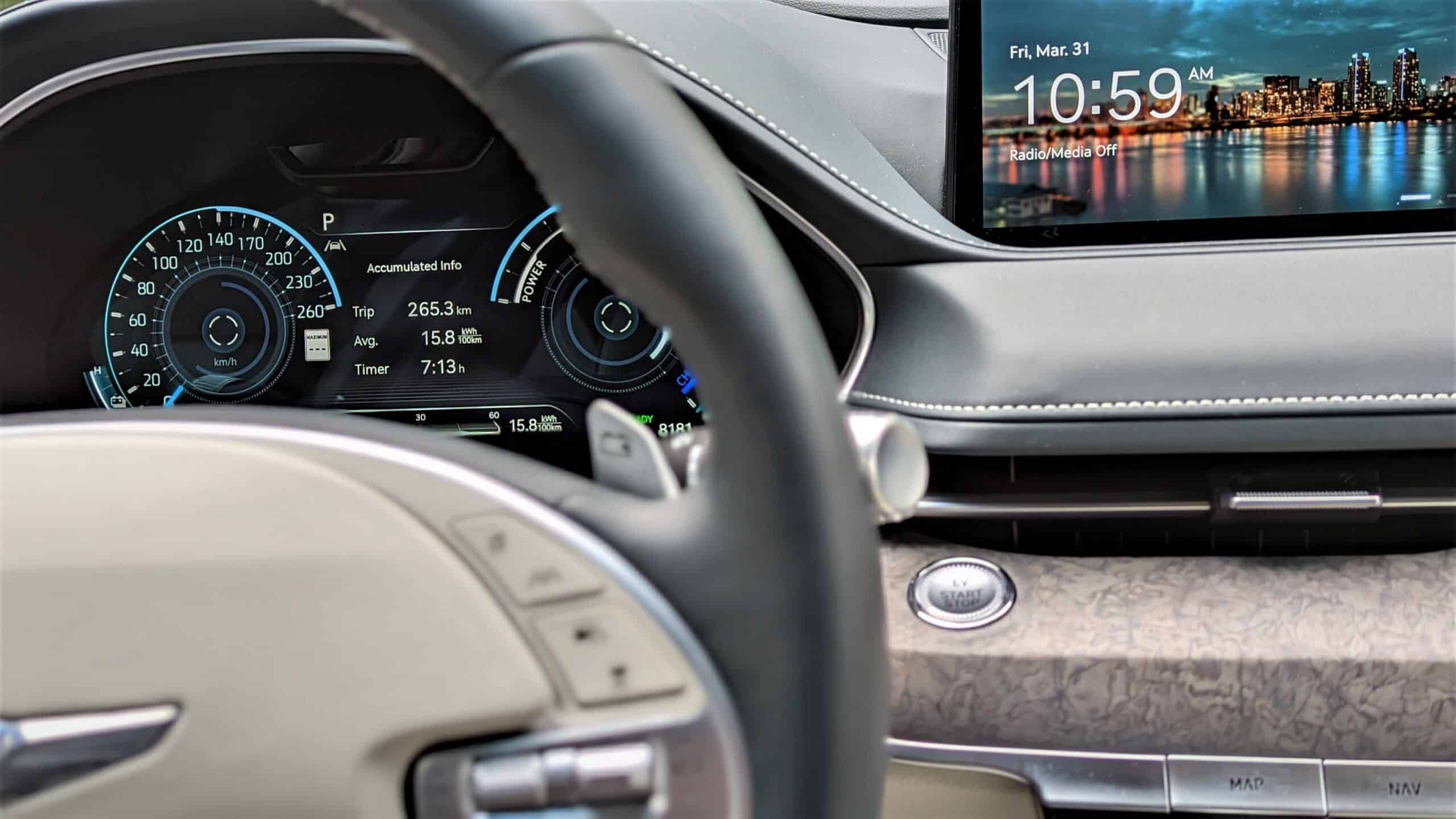
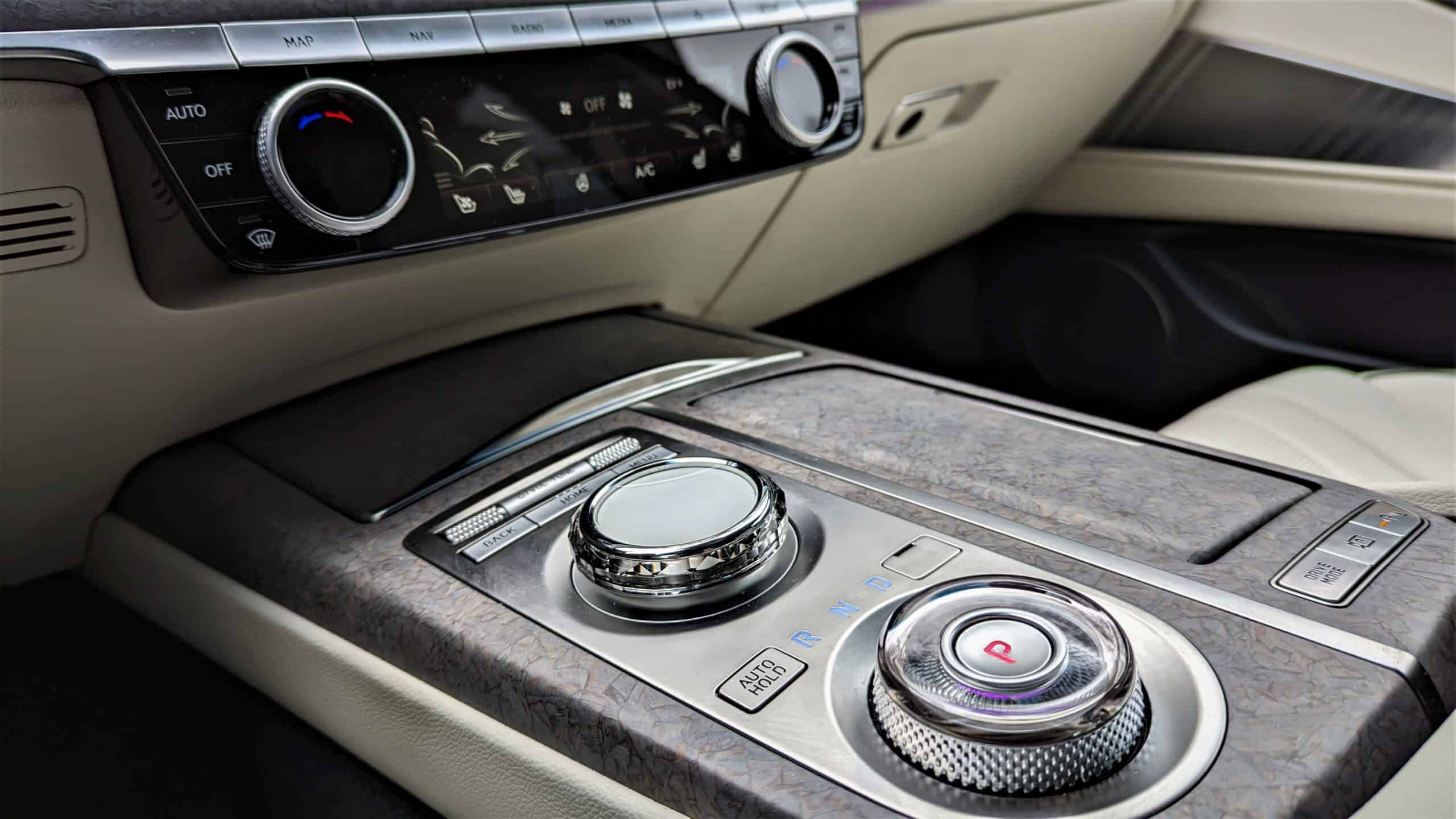
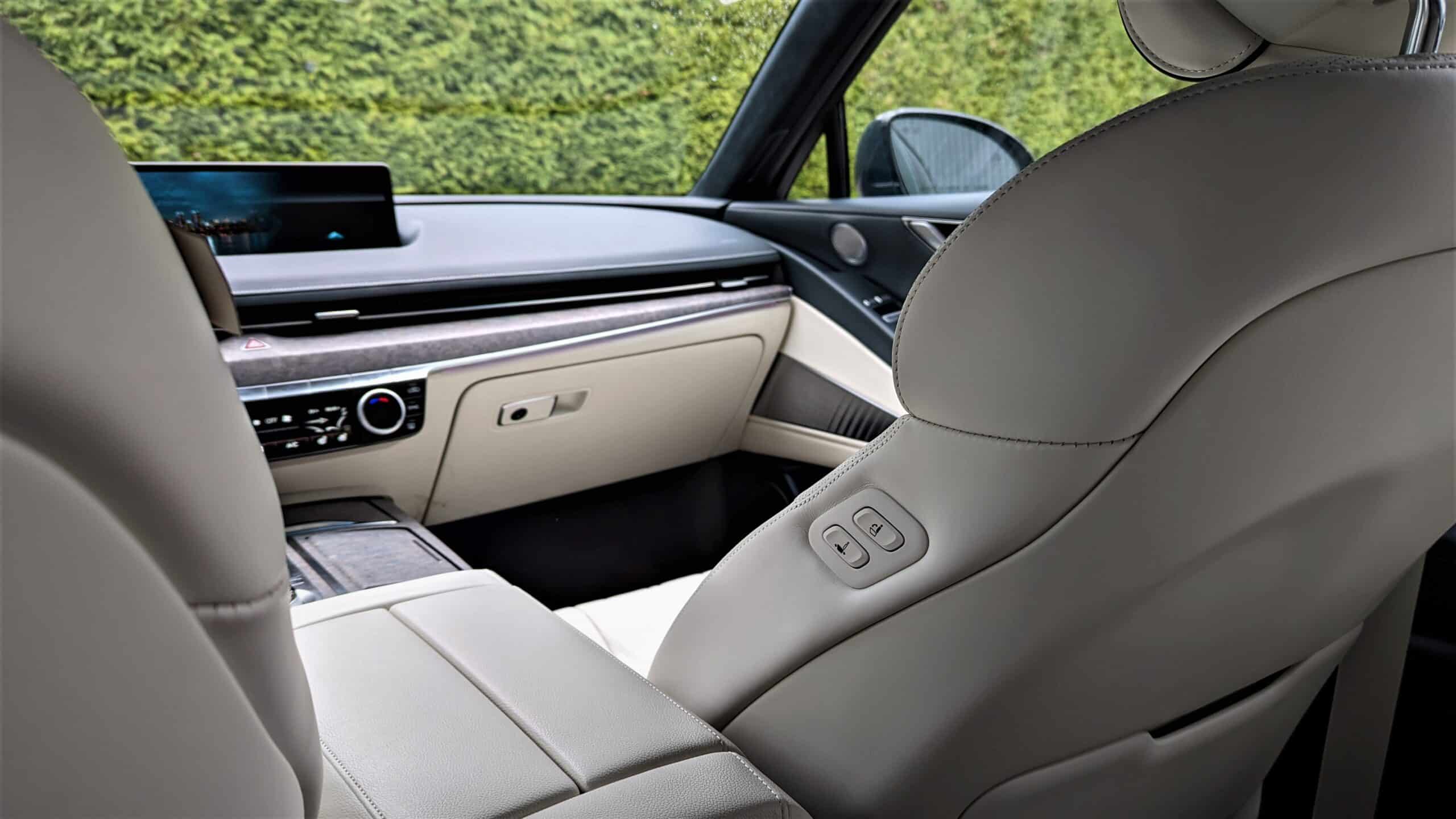
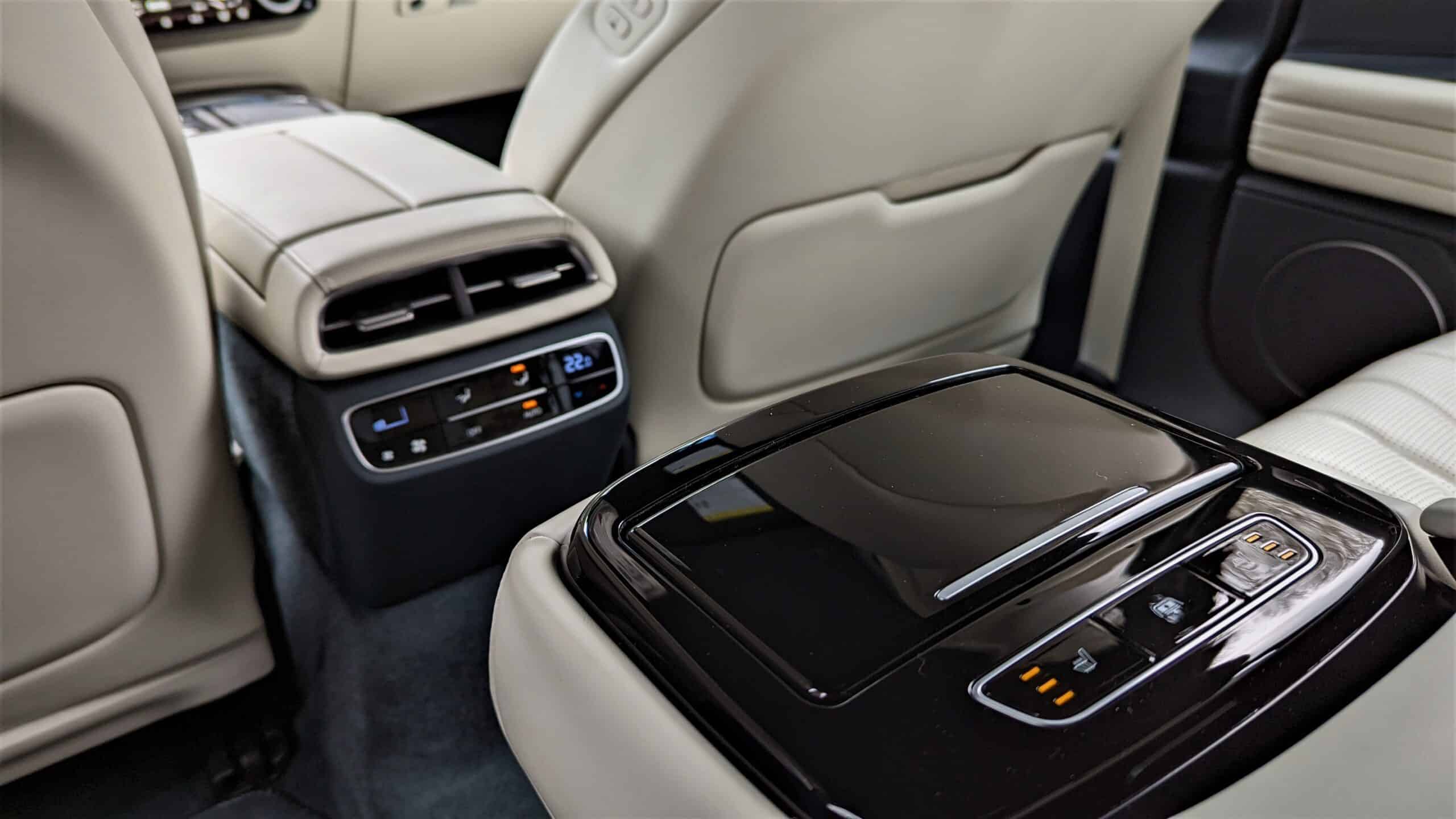
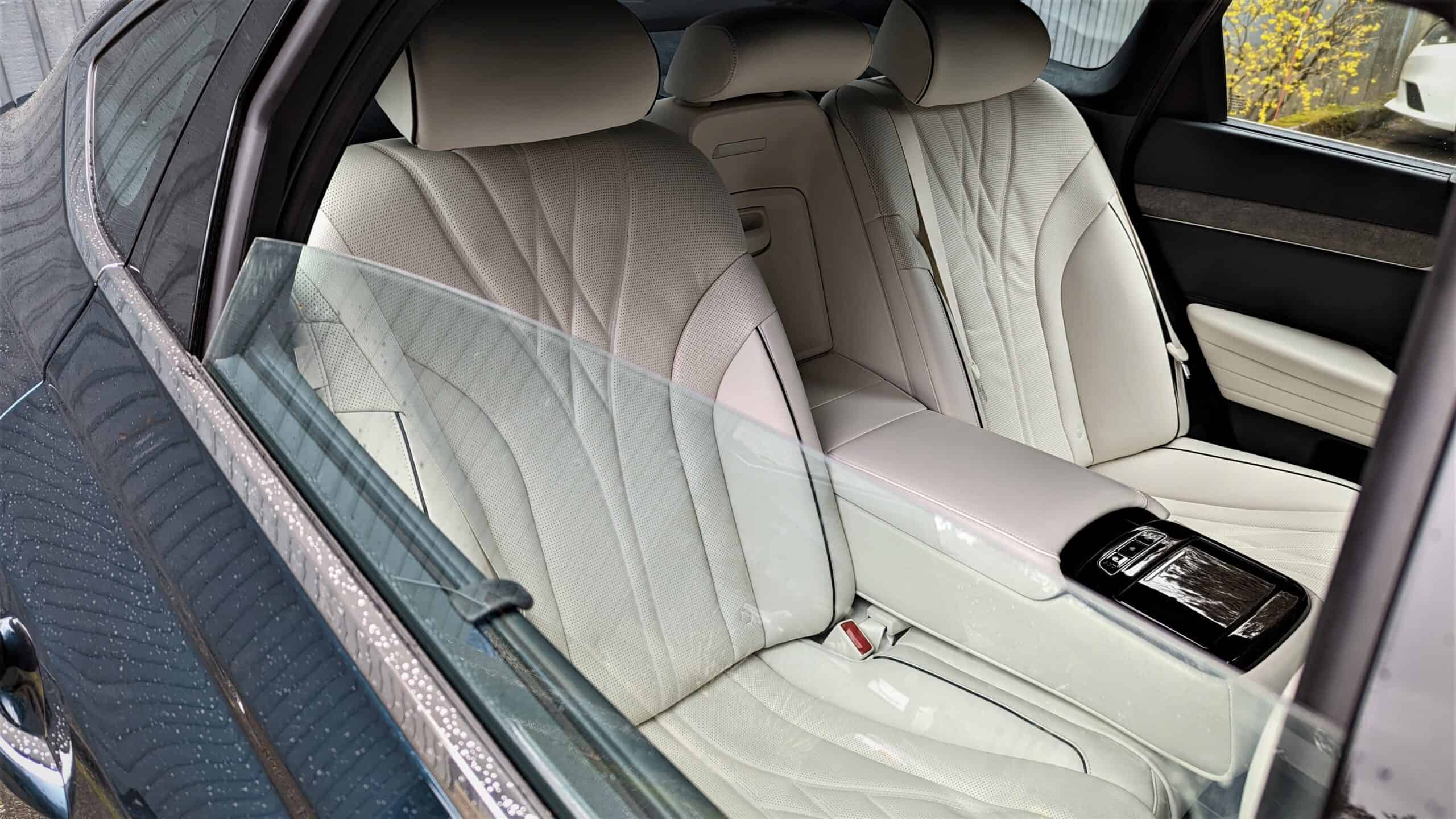
The 2023 Genesis G80 Electrified does come with a price premium over the gasoline equivalent. The top-of-the-line G80 Sport Plus is priced at $82,500; the fully loaded G80 Electrified (only one trim is offered) is priced at $105,000. The G80 EV is about 25% more expensive than a fully loaded gasoline version.
Overall, I was extremely impressed with the G80 Electrified, even with its higher price tag. The G80 is a great-looking sedan; it’s more efficient than a purpose-built luxury EV and super comfortable and luxurious. What’s there not to like?
Check out the Genesis official website for more information on the G80 Electrified and other Genesis vehicles.
